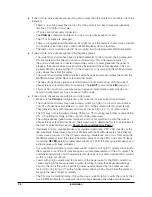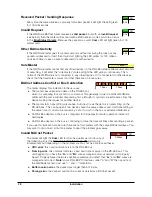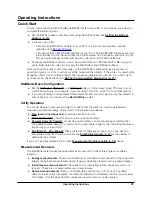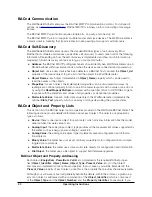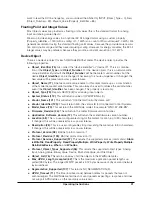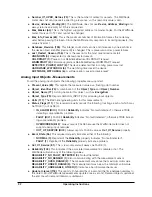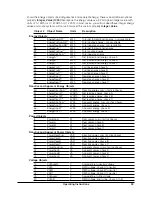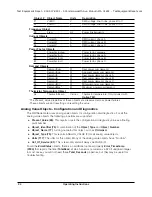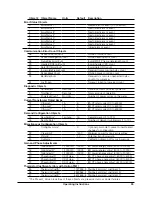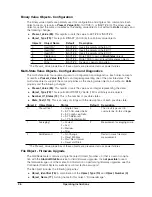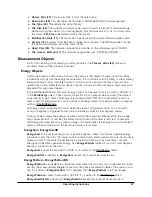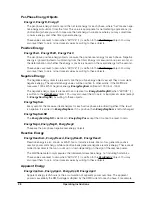
40
Operating Instructions
Voltage Objects
VoltAvgLN
This is the average line-to-neutral voltage (average of
VoltA
,
VoltB
, and
VoltC
). Only active phases
are included (phases where the voltage is above 20% of nominal).
VoltA, VoltB, VoltC
These are the RMS AC voltages for each phase, measured relative to the neutral connection on
the meter. If neutral is not connected, then they are measured relative to the ground connection.
Voltage phases that are not connected may report small random voltages, but the WattNode
meter treats any phase reporting less than 20% of the nominal Vac as inactive and will not mea-
sure power or energy on inactive phases.
VoltAvgLL
This is the average line-to-line voltage (average of
VoltAB
,
VoltBC
, and
VoltAC
). All phases are
included in the average.
VoltAB, VoltBC, VoltAC
The WattNode meter cannot directly measure line-to-line voltages. It provides these objects as
estimates of the line-to-line voltage. In order to estimate these voltages, the meter must know the
phase offset or the type of electrical service (see
PhaseOffset
configuration object).
Frequency
Freq
The WattNode meter measures the AC line frequency in Hertz. All phases must have the same line
frequency; otherwise this value will be erratic or incorrect.
Current
The WattNode BACnet meter estimates the RMS current for each phase. This is an indirect
measurement and does not include all harmonic content, so the current is not as accurate as the
power and energy measurements.
CurrentA, CurrentB, CurrentC
Technically, AC current does not have a sign (positive or negative), but the WattNode meter sets
the sign of the current to match the sign of the real power for the same phase. For example, if the
power on phase A is negative, then the current for phase A (
CurrentA
) will also be negative.
Power Factor
The power factor is the ratio of the real power to the apparent power. Resistive loads, like incan-
descent lighting and electric heaters, should have a power factor near 1.0. Power-factor corrected
loads, like computers, should be near 1.0. Motors can have power factors from 0.2 to 0.9, but are
commonly in the 0.5 to 0.7 range.
If the power for a phase is negative, the power factor will also be negative. The reported power
factor will be 1.0 for any phases measuring zero power, and will be 0.0 for any inactive phases
(line voltage below 20% of nominal Vac).
The WattNode meter measures the displacement or fundamental power factor, which does not
include harmonics.
PowerFactorA, PowerFactorB, PowerFactorC
These are the power factor values for each phase.

